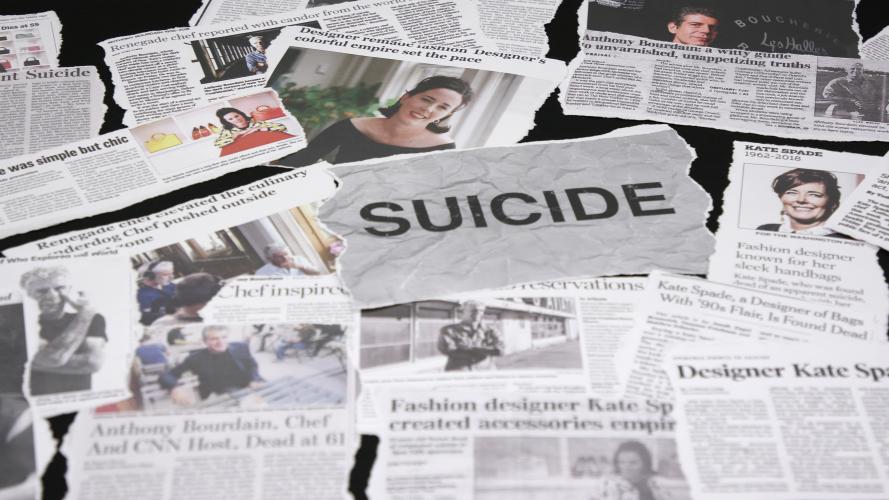
Study shows news media often overlook best practices when reporting celebrity suicide deaths

A study published today by researchers at Nationwide Children’s Hospital found that newspapers followed about half the recommended guidelines in reporting the suicide deaths of Kate Spade and Anthony Bourdain.
In the blind study published in JAMA Network Open, researchers examined a sample of print newspaper articles from across the United States that covered the Spade and Bourdain suicides. The stories followed an average of seven out of 14 specific guidelines, and only two of the 14 guidelines were followed by all selected newspapers for both deaths — avoid single-cause explanation for suicide death, and avoid referring to suicide as a “growing problem,” “epidemic,” or “skyrocketing.” Further, the study found that two guidelines were not followed at all by any of the selected publications — share a hopeful message that suicide is preventable, and convey suicide behaviors can be reduced with mental health support and treatment.
Research shows typical news media and social media coverage of suicide has the potential to increase the risk for contagion, especially among at-risk individuals. To reduce that potential, suicide reporting guidelines for media were created in 2001.
“Significant strides have been made in certain aspects of suicide reporting, but we still have a lot of work to do,” said Arielle Sheftall, PhD, principal investigator with the Center for Suicide Prevention and Research in the Abigail Wexner Research Institute at Nationwide Children’s and lead author of the study. “Suicide needs to be reported on as a public health issue every single time rather than a story focused on the celebrity’s death and the method of that death. Most important, suicide prevention resources – places where at-risk individuals can seek help – are vital to include in reporting.”
"This is not a New York Times or Washington Post problem; this is an industry problem," said Nerissa Young, who teaches journalism at the E.W. Scripps School of Journalism at Ohio University and is a co-author of the study. "And we hope our research will encourage news media to use best practices to cover this public health issue in a way that respects the lives that are lost, the families and friends who are affected and the ethical principles of good journalism."
Young continued: "I don't think any journalist intends to do harm, but the lack of knowledge of best practices may inadvertently cause it. This is not censorship; this is a call to do more and better reporting about an issue that takes approximately 47,000 lives a year — far more than terrorist attacks, mass shootings and natural disasters combined."
Nationwide Children’s suicide prevention experts recommend that suicide reporting guidelines be reviewed before publication of a story about suicide and that the entire newsroom have access to and knowledge of the guidelines – from reporters on every beat, to editors, copywriters, photographers and headline writers.
“When creating these guidelines, we collaborated with journalists and individuals affected by suicide to make sure they were practical and accounted for key perspectives,” said John Ackerman, PhD, clinical psychologist and suicide prevention coordinator for the Center for Suicide Prevention and Research and senior author of the study. “Many journalists are reporting on suicide in a thoughtful, way that respects the victim and the public, but other reporters in the same newsroom may not know these guidelines exist or why they are important.”
Because the study was blind, reviewers – who were suicide prevention experts – were not aware of the type of newspaper outlet or the reporter. Only the headline, body copy and photos were included in the review.
“You never know who is reading a story or which social media outlet has shared the story,” Sheftall said. “People who may be struggling with suicidal thoughts could be exposed to these stories, and that is why it is so crucial to follow all of the suicide reporting guidelines. We are not pointing fingers at journalists or their newsrooms but encouraging them to become aware of the guidelines.”
If you or someone you know is having suicidal thoughts, go to your local emergency room immediately, call the National Suicide Prevention Lifeline at 800-273-TALK (8255) or you can reach the Crisis Text Line by texting "START" to 741-741. If you believe an overdose has occurred, call the national Poison Help hotline 800-222-1222.
Newsrooms can find the suicide reporting guidelines here.
